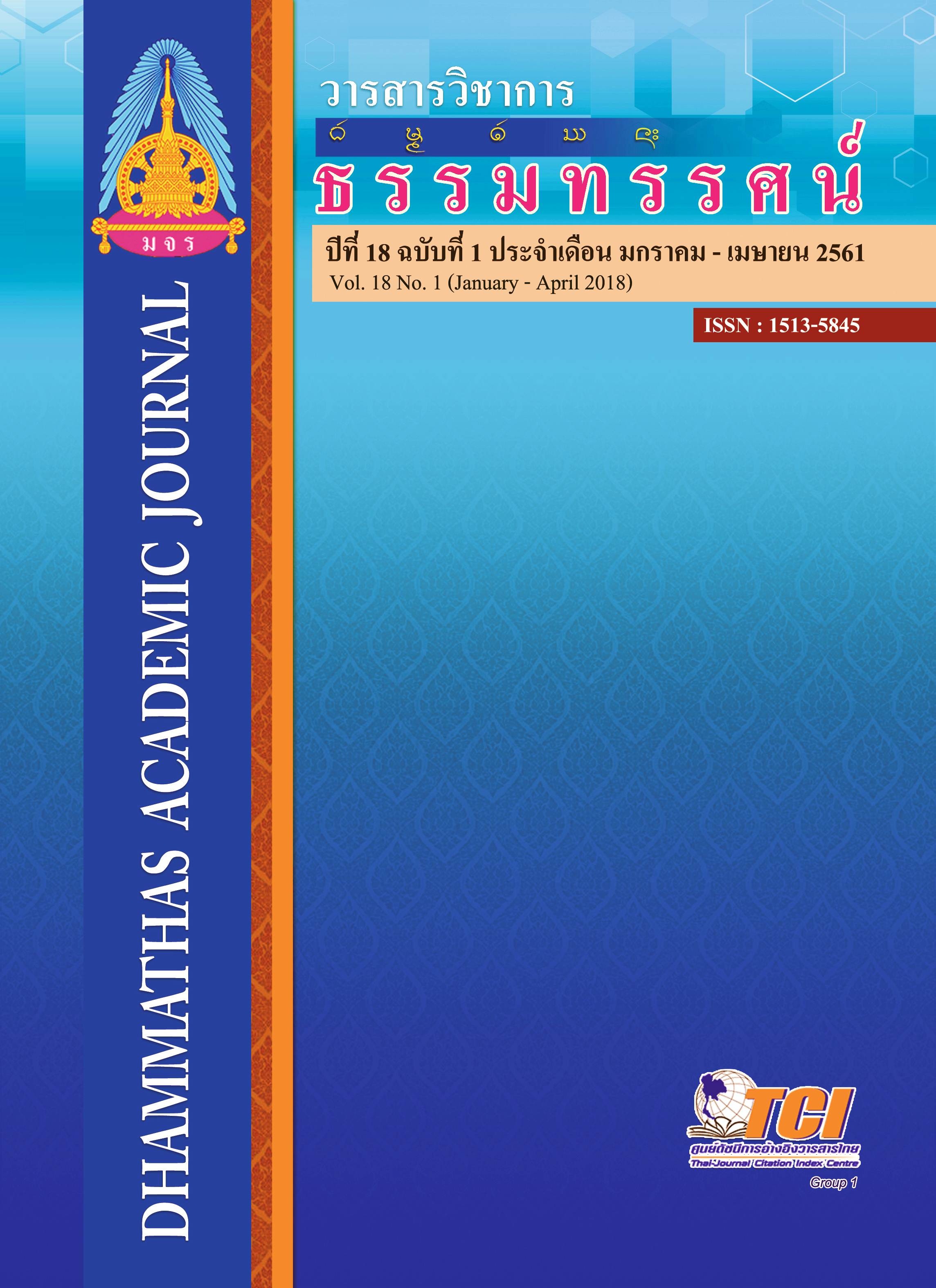The Role and Connection Region of KhrubaKanchana Aranyawasee Mahathera (KhrubaMahathen)
Main Article Content
Abstract
This research aimed 1) to study the concept and identity of KhrubaKanchanaThis research aimed 1) to study the concept and identity of KhrubaKanchanaAranyawasee Mahathera (KhrubaMahathen) 2) to study the role of KhrubaKanchanaAranyawasee Mahathera (KhrubaMahathen) in connecting regions in terms of Buddhist culture and 3) to analyze the influence of KhrubaMahathens’ works in term of education, dissemination of Buddhist culture. This research was qualitative the researchers had collected data from the documentaries, books, related the researches and in-depth interviews. The informants were 4 Buddhist monks and 4 Buddhist people in Phrae province and Chiangmai province. The research had found that: KhrubaKanchana Aranyawasee Mahathera (KhrubaMahathen) was a venerable who lived in early Rattanakosin period. He was born in 2332 B.E. at a Sungmen Sub-district, Sungmen District, Phrae Province. He had ordained to be Buddhist monk at Wat Sri-chum Phrae Province in 2352 B.E., KanchanoBhikkhu was his Buddhist monk’s name. After that he went to study Vipassana (Buddhist Meditation) in Chiang Mai Province and Myanmar until he become an expert in DHAMMAVINAYA (Teaching and Practicing of Buddhism). In his late, KhrubaMahathen went to stay in RahaengTak provinceand and passed away in that place, he was 80 years old. He made great effort to gather and make the Bai-Lan scriptures at WatSungmenPhrae province, because he wished to enlighten to be a Buddha in the future and keep Buddha’s teaching as long as for 5000 years. He had three main identities, first, he was an expert in Buddhist doctrines and was accepted to be an original of firstKhruba in Lanna who had important roles in checking Tipitaka (Buddhist Scripture) in Lanna. Second, he maintained a life of solitary person, non-accumulated wealth, in his last period to, life he got away from alland and passed away in small Raheang, Tak province, Thirdly, identity of writing Bai-Lan scripture and dissemination, he was very inlelligent and studied Buddhist doctrine to high prophecy and he was competent on many sciences. He had gone to many cities such as Phrae and other provinces in the North and some foreign counties, he persuaded Venerables and lay people who had knowledge to write their knowledge in Bai-Lan and collected in Lanna : Phrae, Nan, Chaingmai and Loungphrabang, all of Bai-Lan scripture he had edited were kept at WatSungmen total around 8,848 piles in 84,500 Bai-Lan. His cultural connection was between Thai and abroad during 2350 B.E. -2405 B.E. He had religious activities in Lanna, Myanmar and Luang Prabang (Lao). He had checked up the Tipitaka, created Dhama to explain the Tipitaka and gathered all of the Buddhist scripture for keeping Buddhist cultural sustainability by virtue of participation from governors, scholars and people for creating Dhamma scripture and other knowledge, when he had created and bought all Bai-lan scripture to keep at Wat Sungmen Phrae province, he rebuilt Hotri at wat Phrasing, built a square structure with four arches and a pyramidal roof of Hodham at wat Sungmen, bough the Buddha's relics from Myanmar to set up at Wat Mahabodhi Phrae Province and built a Kangsadana bell and kept at WatPhraThatHariphunchai. KhrubaKanchana Aranyawasee Mahathera (KhrubaMahathen) was a diamond of Phrae Province. He was a scholar to set up the prosperity to Buddhism and conservation of Lanna literature. In the building of the connection he has 3 main reasons 1. for building connection with powerful city, 2. For building with scholars 3. For spreading Buddhism by creating Bai-Lan scripture, his goal was keeping Buddha’s teaching alive for 5,000 years and he wished to become a Buddha in the future. His influences still continue to the present time. His works are still effective for learning, spreading of Buddhism, and creating Buddhist cultural network. At his influences now a day, Wat Sungmen is a learning center where there is a supply of amount of Bai-Lan scripture. Therefore, it is the center of learning Lanna language, moreover, for many Buddhist scholars who are interested to exchange Bai-Lan scriptures, therefore seeking and spreading the new knowledge to public. The influences of his spreading, interested people learn Buddhism history and works by Bai-Lan scripture.

